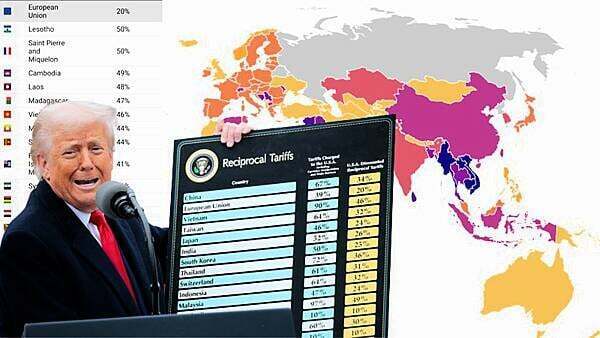-By Economic Editor

(Lanka-e-News -03.April.2025, 11.10 PM)Well, well, well. Just when Sri Lanka thought things couldn’t get worse—what with economic crises, IMF loans, and politicians who can’t tell a budget from a buffet—Donald Trump has gifted us with a 44% tariff on apparel exports. Talk about tough love.
For those who just tuned in, Sri Lanka’s apparel industry is a $234 million export machine to the US. It’s the lifeline of thousands of workers, the pride of our industrial sector, and now, the unfortunate victim of Trump’s “America First” policy. Apparently, Sri Lanka has joined the exclusive club of countries that Trump believes are unfairly benefitting from US trade. Move over, China—there’s a new “trade villain” in town.
Now, the Sri Lankan apparel giants—many of whom have foreign owners—are in a bit of a pickle. For years, they used their precious US export quotas to make billions, but where did the money go? Offshore, of course. Somewhere in a tax haven, probably sipping coconut water while Sri Lankan factory workers sweat it out on the production floor. Now that the golden days are over, they’re crying foul.
“Trump has imposed a 44% tariff! How will we survive?” they wail.
Well, gentlemen, when you had it good, why didn’t you bring those dollars back to Sri Lanka? Now that the American dream is costing a little extra, suddenly it’s our problem?
Despite the panic, Sri Lanka isn’t doomed. We have two solid ways to turn this trade crisis into an opportunity:
1. Go Premium or Go Home
The days of cheap mass production are over. If Sri Lanka wants to keep exporting to the US, it needs to shift gears and move into high-end apparel. Luxury brands don’t mind paying extra if they get top-notch quality. Let’s face it, a 44% tariff on a $5 T-shirt is a death sentence, but on a $500 designer jacket? Just a mild inconvenience.
Sri Lanka already has a reputation for quality and ethical manufacturing. If we play this right, we can become the Louis Vuitton of South Asia. Instead of competing with Bangladesh and Vietnam for the cheapest clothes, let’s compete with Italy and France for the finest.
2. Find New Markets—Because America Isn’t the Only Country with Money
Yes, the US is a huge market, but it’s not the only one. Europe, Australia, Japan, and even China have a thirst for high-quality apparel. With some smart trade deals and strategic marketing, Sri Lanka can pivot away from over-reliance on Uncle Sam’s unpredictable policies.
Sri Lanka’s new government, the NPP, has some serious thinking to do. This isn’t just about tariffs; it’s about economic survival. Here’s what they need to focus on:
Short-Term Relief – Support the apparel sector with incentives to help them transition. Lower energy costs, tax breaks, whatever it takes to soften the blow.
Long-Term Strategy – Invest in automation and high-tech manufacturing to produce premium apparel.
Trade Diversification – Start courting new buyers. Time to slide into Europe’s DMs.
Before we take this personally, let’s acknowledge one thing: Sri Lanka isn’t the only country facing tariffs. Trump’s trade war is like an overcooked Sri Lankan curry—burning everyone who takes a bite. Countries across Asia are feeling the heat, and the US itself isn’t immune to the consequences. Higher tariffs mean higher prices for American consumers. That trendy Sri Lankan-made yoga outfit? Now it costs an extra 44%. Good luck with that, Karen.
Yes, a 44% tariff is a gut punch. Yes, some businesses will struggle. But Sri Lanka has always been resilient. If we play this smart, we can turn this crisis into an opportunity. It’s time for the apparel industry to evolve, for the government to step up, and for exporters to remember that maybe—just maybe—keeping some of that foreign currency inside Sri Lanka wasn’t such a bad idea after all.
And if all else fails, we could always start a global campaign: “Make Trump Wear a Sarong.” Now that’s a trade war worth fighting.
-By Economic Editor
---------------------------
by (2025-04-04 16:44:49)
Leave a Reply